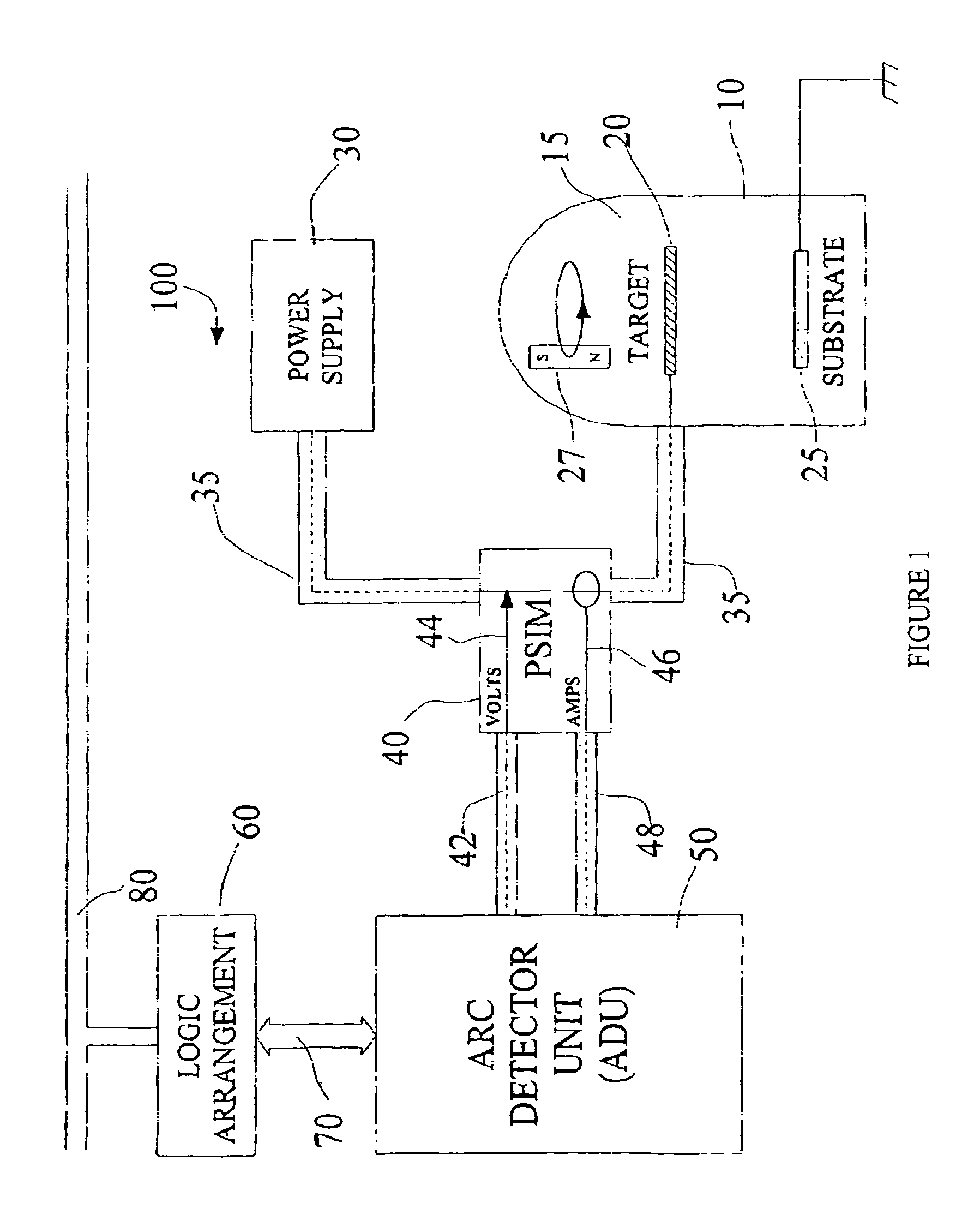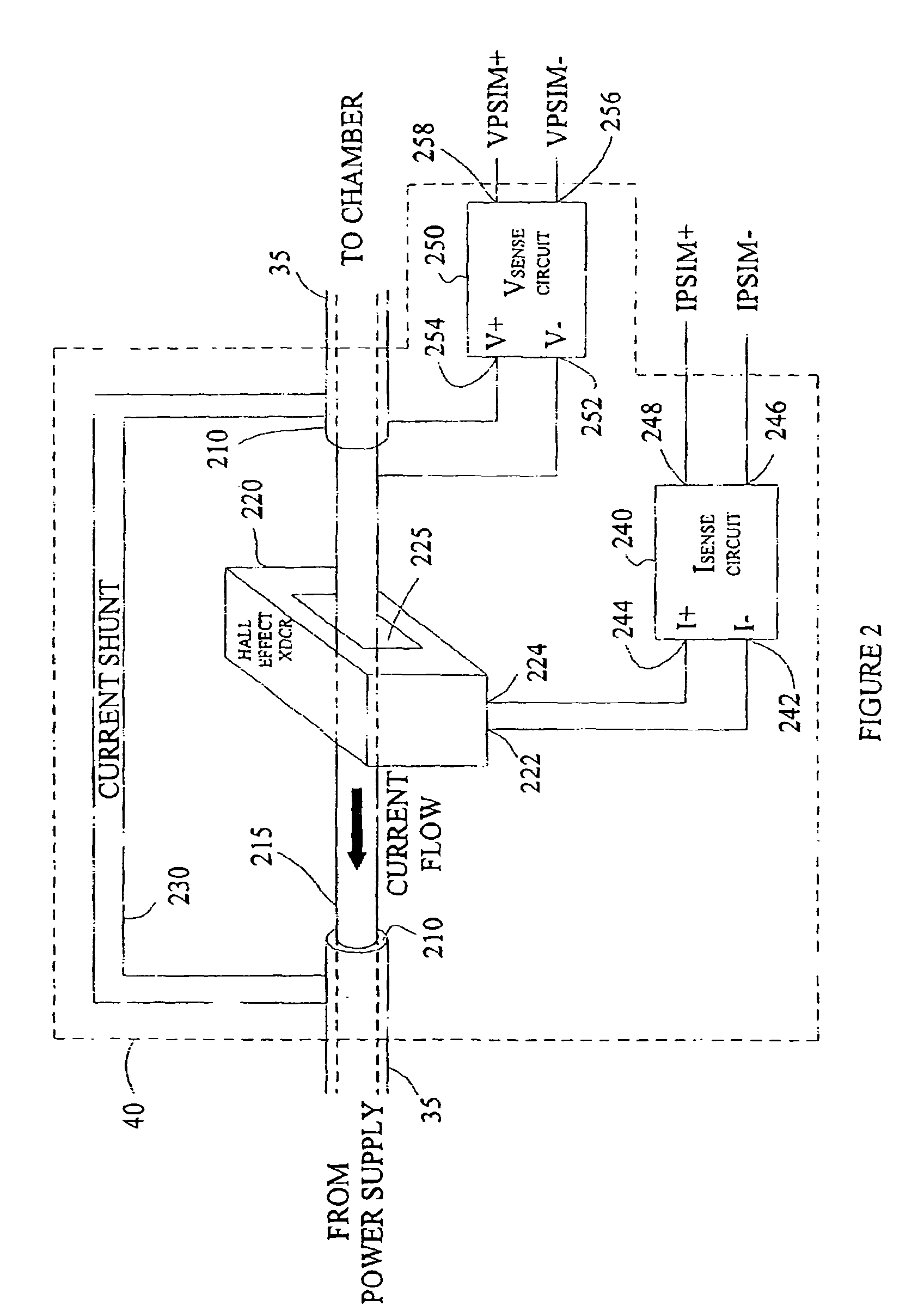Current-based method and apparatus for detecting and classifying arcs
a technology of current and arc, applied in the direction of resistance/reactance/impedence, instruments, vacuum evaporation coating, etc., can solve the problem of unintended low impedance path from the anode to the target, unintended low impedance path, yield-reducing defects in forming integrated circuits on semiconductor wafers, etc. problem, to achieve the effect of reducing the power supply response to the arc, reducing defects, and improving the yield of wafer
- Summary
- Abstract
- Description
- Claims
- Application Information
AI Technical Summary
Benefits of technology
Problems solved by technology
Method used
Image
Examples
Embodiment Construction
[0082]While this invention is susceptible of embodiments in many different forms, there is shown in the drawings and will herein be described in detail preferred embodiments of the invention with the understanding that the present disclosure is to be considered as an exemplification of the principles of the invention and is not intended to limit the broad aspect of the invention to the embodiments illustrated.
[0083]The present invention is believed to be applicable to a variety of different types of plasma generation applications, and has been found to be particularly useful for film deposition applications, the latter benefiting from a technique for responding to detected arcs during the generation of a plasma environment. Example embodiments described herein involve PVD sputtering techniques; however, the present invention can be implemented in connection with a variety of systems, including those using plasma-generating techniques such as plasma etching or Plasma Enhanced Chemica...
PUM
| Property | Measurement | Unit |
|---|---|---|
| thick | aaaaa | aaaaa |
| voltage | aaaaa | aaaaa |
| current | aaaaa | aaaaa |
Abstract
Description
Claims
Application Information
 Login to View More
Login to View More - R&D
- Intellectual Property
- Life Sciences
- Materials
- Tech Scout
- Unparalleled Data Quality
- Higher Quality Content
- 60% Fewer Hallucinations
Browse by: Latest US Patents, China's latest patents, Technical Efficacy Thesaurus, Application Domain, Technology Topic, Popular Technical Reports.
© 2025 PatSnap. All rights reserved.Legal|Privacy policy|Modern Slavery Act Transparency Statement|Sitemap|About US| Contact US: help@patsnap.com



